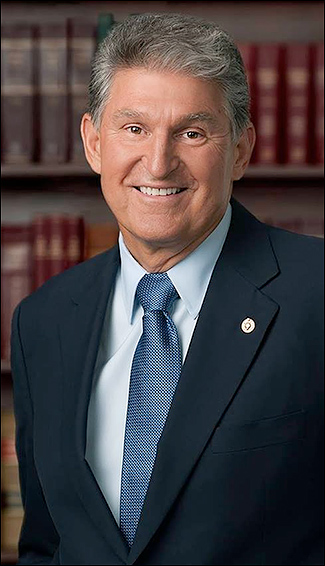By Jim Ellis
June 22, 2018 — A new West Virginia statewide survey testing the important US Senate race between Sen. Joe Manchin (D) and Attorney General Patrick Morrisey (R) done by Monmouth University was just released showing Manchin leading Morrisey 50-43 percent, but the polling sample spurs methodological questions.Monmouth surveyed 653 West Virginia voters between the June 14-19 period, but 428 of them were from the 3rd Congressional District. The sample was heavy in the state’s open southern CD because the pollsters were also testing the US House contest between state Sen. Richard Ojeda (D-Logan) and state House Majority Whip Carol Miller (R-Huntington). The northern 1st District contributed only 87 voters to the sample, while 138 came from the 2nd CD.
To ensure a more representative statewide sample, the Monmouth pollsters weighted the data to compensate for the major discrepancy. But, the weighting still reports that 34 percent of respondents are from the 1st District, 34 percent from the 2nd, and 32 percent from the 3rd, which still gives the latter district the overwhelming preponderance of respondents.
Monmouth reports results under several turnout models. A “potential” voter is one who has participated in at least one election since 2010. A series of responses were also included under a “likely voter” model in what they describe as a “standard midterm election”, while a final response set comes from one that projects a “Democratic surge.”
Adding the latter category for a West Virginia poll is curious because the “Democratic surge” is supposedly occurring because of President Trump’s negative approval ratings. Yet, in West Virginia, which is his strongest state, the president’s favorability index from this poll is 67:29 percent positive to negative. Therefore, testing for a “Democratic surge” model appears to make little sense. In all, however, the differences among and within the three turnout models: “potential voter”, “likely voter”, and “Democratic surge”, are minimal for the Senate race.
Additionally, a series of ballot test numbers were also included under a scenario where former energy company CEO and convicted felon Don Blankenship, who lost in the May Republican primary, is included as the nominee of the state’s Constitution Party. West Virginia has what is commonly known as a “sore loser” law, thus barring a losing primary candidate from again entering the subsequent general election as an independent candidate or a minor party nominee. Therefore, in order for Blankenship to be placed on the ballot — and his stated intent to enter the race is solely to help defeat Republican nominee Morrisey — a court would have to nullify the state’s existing law, and his chances of convincing the West Virginia judicial system to do so are almost non-existent.
Additionally, the severe over-sample from the 3rd District is troubling because this is Rep. Evan Jenkins’ (R-Huntington) CD, who lost the Senate primary to Morrisey, and the one district where the eventual nominee did not win. Therefore, it is clear that Morrisey begins the race in a clear deficit position here, and starts in a very different situation than he does in the other two districts.
All that being said, Monmouth’s standard midterm likely voter model without Blankenship shows Sen. Manchin leading AG Morrisey, 50-43 percent, as previously mentioned. This does track consistently with other recent polls, especially the Manchin Campaign publicly released internal data.
The multiple ballot tests suggest what most people believe about this competitive US Senate race, that, today, Sen. Manchin has a clear lead, but Morrisey is in position to quickly turn the contest into a toss-up and has a path to victory. Morrisey has such status because the electorate clearly wants to elect members of Congress who support President Trump’s agenda. When asked such a question, by a margin of 83:10 percent, the respondents say it is “very important” (58 percent) or “somewhat important” (25 percent) to “cast a vote for Congress that shows your [support of/opposition to] President Trump.”
In the 3rd District House race, which could become a sleeper Democratic opportunity campaign, Sen. Ojeda leads Del. Miller, 47-41 percent, under the likely voter model, but 43-41 percent using the full voter sample.

